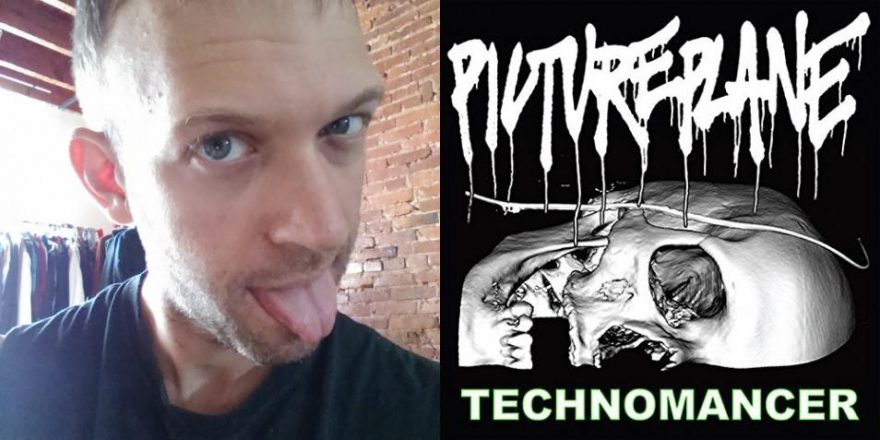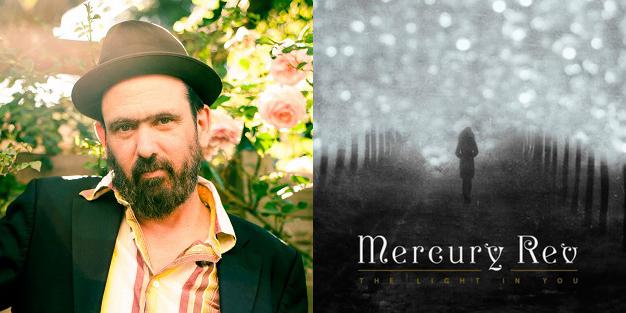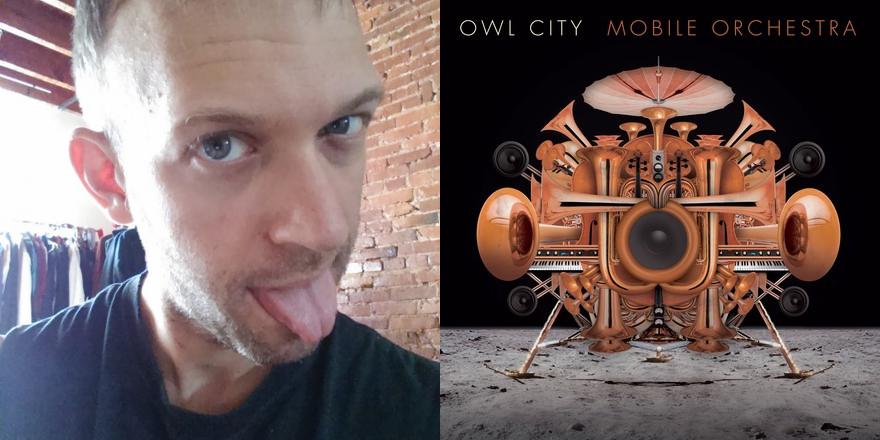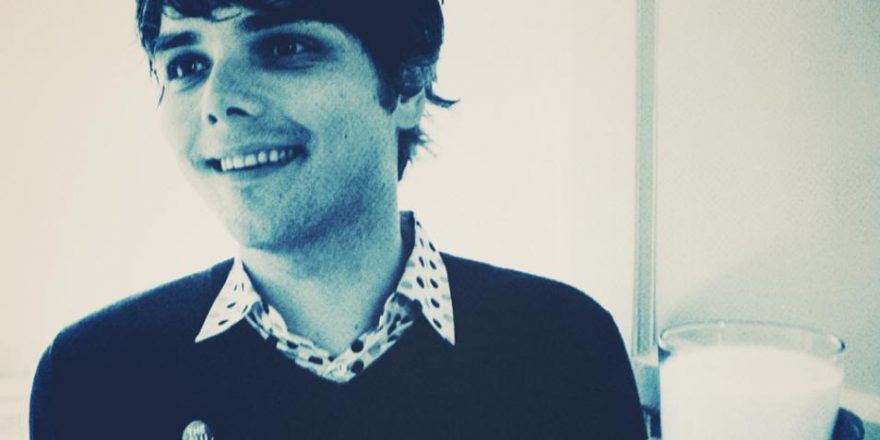Technomancer is the new album by Pictureplane, aka Travis Egedy, whose own enthusiastic Twitter bio reads: “TECHNOSHAMAN. STREET MAGICIAN. OCCULT CONTEMPORARY. INDIGO LEMONADE. ALIEN BODY.” The album’s press release supports Egedy’s claims to esoteric edginess by mentioning that he has an X-Files tattoo, which seems kind of like citing your proficiency at Mortal Kombat finishing moves when applying for a job as a bouncer, but I imagine there very well may be some bars in Brooklyn now where such knowledge would be sufficient for keeping the clientele in line.
Anyway, true to this Teenage-Pagan-at-the-Temple-of-Spencer’s aesthetic, Egedy’s new album is fairly fractal — as in, you only have to hear a tiny part of it to know whether or not you’re going to find it useful. There are no deviations from a basic strategy, and contrary to what the title might make you think, there’s no techno, unless you consider anything at all with a synthesized melody or quantized rhythm to be techno. These are all pop songs, with verses and choruses exactly where’d you expect to find them, keeping the machine-music connections circumscribed to nostalgic gestures lifted from late-’80s/early-’90s not-techno-but-still-synthetic dance albums music. The label cites Ministry and C+C Music Factory, but I get more of a Pretty Hate Machine vibe, if Trent Reznor had been super into anime.
Egedy has a limited range and one style of singing, splitting the difference between falsetto and a stage whisper, like somebody who is trying to karaoke “Bye Bye Bye” without anyone in the next room hearing, or maybe the singer of EMF’s first take after a long night. The songs’ drum sounds and synthetic melodies hew closely to ‘90s electronica conventions, not far off from what comes pre-loaded on a Roland X0X Groovebox. With only one or two exceptions, every track aims harmonically for that last-song-of-the-prom/album melodrama: vaguely triumphant and decidedly somber, a stretched and flattened climax that sustains a temporary submission to a sweet strain of melancholic nostalgia for now.
For the potential customer, this information is most likely sufficient to help decide whether or not you want this record— it wears its signifiers prominently on its sleeve and there are no inversions or digressions to complicate your decision. For the active scientist, however, all this merely indicates that the unique soul of the work lies elsewhere. Egedy’s emphasis on his fashion line and gallery works, and his overt underscoring of occult sympathies, are our first hints that the music itself is intended to be the vehicle for something else, something underneath the form, something that must put on a costume in order to make itself visible to us. Strictly straightforward pop constructions of the songs and regular, rigid rhythms make sense as faithful, mechanical conveyors of the human voice.
However, we must be sensitive in our approach to the lyrical content. We already know that Pictureplane disputes blustering intellect as the proper tool for determining meaning. His “Real Is a Feeling” slogan — accompanied by an obtuse manifesto and written in large, unadorned letters on a banner that hung behind him when I saw him play a few years back — proposes the Real to be just one measure present in Egedy’s larger pool of emotions. To him, meaning is not fixed inside of any thing, or imposed on it from above, but arises within the beholder of that thing. Contrary to an image of Reality as an unforgiving boundary — such as the Law of Gravity — Egedy makes it something slippery and personal. Accordingly, we must also be careful not to hunt for references to established occult philosophy, which can often be the temptation when dealing with artists who tell everybody they’re way into occult shit. The modifier “contemporary” in his social media autobio is most likely a way of communicating that he does not necessarily connect his work to the continuing disciplined traditions of secret knowledge, i.e., Kabbalah, Theosophy, Western Hermeticism, etc. Luckily, Egedy tells us immediately that dream-logic is the proper mode of interpretation: the first line delivered on the album’s opening track “Sick Machine” is “Take me through your underworld,” explicitly inaugurating a journey into the topographical realm of dreams, shades, dead ancestors and Hades. You know what that means, right? Now I get to be your Virgil!
You’ll notice immediately in “Sick Machine” that the machines, like human figures in a dream whose faces never come into focus, are not described more specifically than simply “machines.” We learn none of their characteristics or components, we are given no clue as to what categories of thing we are and aren’t including in this invocation. Our only real clues are the prefix “techno-” being used twice (to append an euphoria and a thriller) and this repeated line: “Nothing is as it seems/ Original killer hiding under sick machines.” Which machines then? All of them, assuredly. Rather than dwelling on the tactile feeling of machines or their distinguishing attributes, we begin our descent into the murky emotional feeling of life dominated by devices in general — a familiar place where one’s identity is constructed via complex objects that we cannot make ourselves, connected in an invisible web by unseen but totally tangible servers, using templates designed by people we will never meet.
The Original Killer, then, is the Ego, which I use here (like a Jungian) to mean the conscious part of one’s personality, the part that fancies itself the sole driver of the engine, the entirety of the I. In the Ego’s day-world of industrialized identity-construction we are compelled continually to pick out which images, references, experiences and convictions we will incorporate in the daily broadcast that extends our existence on the Web, and through this process the Ego grows ever stronger. But the Ego is not at home in the Underworld. Depth psychologist James Hillman makes a big deal of the archetypal importance of Hercules’ violent siege of the Underworld, calling the heroic Ego that trespasses there “a killer among images. The image makes it mad, or rather evokes its madness,” he explains, “because heroic sanity insists on a reality that it can grapple with, aim an arrow at, or bash with a club. Real equals corporeal.”1 Which is, of course, the exact position Egedy’s last big song/album/manifesto was working to subvert. However, Egedy, who explicitly sculpts himself in that contemporary heroic model, the Rock Star, now finds himself in a techno-trap: living life online feels like a kind of non-corporeal existence, and should (and maybe still can?) transcend or mediate the madness of the heroic Ego. But like that other Original Killer, the Ego ends up feeling confused and assaulted by the judgments that issue from that realm beyond, and turns violently on the sibling perceived to be favored arbitrarily by the authority native to that place.
Monologuing to this dark sibling — the elusive You— occupies the majority of Egedy’s attention on Technomancer. You is called “androgynous,”2 a “shapeshifter,”3 a “reality engineer”4 and a “renegade”5 — it is an uncontrollable power that Egedy’s I addresses with a pervasive sense of frustration. The consistent invasion by You attests to the importance and urgency his presence inspires. You’s intentions are sometimes explained, but never in the words of You, leaving the impression that perhaps Egedy knows about You and You’s motivations by some manner other than verbal communication. Does You assault Egedy directly via some psychic means? (On track 2, “Esoterrorist,” Egedy complains of “feeling paranormal again.”) We cannot avoid this possibility: You is Egedy. This would mean that the assault precedes the assaulter — that the emergence of some impulse or image from within Egedy strikes like a lightning bolt, breaking off a piece of his Ego that then becomes reflected like a fragment of fractal until it is the size and shape of an adversary.
Skeptics and believers alike have often connected experiences of contact with aliens and angels as interaction with parts of the Self with which the Ego refuses to identify. This ambiguous yet inescapable You with whom Egedy stays locked in a one-sided argument really begins to crystalize when we recognize it as an embodiment of those exiled aspects of Self. Certain lyrics that seem cliché or tossed off become very telling when viewed this way — for instance, “Can You trip like I do?”6 is transformed from the rhetorical query of a sanctimonious stoner to the seed of a possible reconciliation: a curiosity whether this Shadow embodiment can ascend to the conscious day-world in a reversal of the process that has brought us to its native land. In true dream-world fashion, the answer is found before the question (perhaps even prompting it in the first place!) in the song’s opening lines: “I don’t want what You got/ I don’t want to be bought/ Because You are selling me.” In the day-world, of course, it is Egedy who sells himself — on www.travisegedy.com, no less, where there are football jerseys ($50) and limited-edition long-sleeves ($50 but sold out) and bomber jackets ($180) and posters ($3) and fake grocery store tabloids ($10) all designed with Egedy’s conspicuous sense of style. And usually with his band’s moniker prominently emblazoned somewhere. But there is something about this that Egedy cannot abide, and refuses to accept, and so must thrust out into the dark reflection of You.
He chases You across these eleven songs, sometimes seeming to see exactly who You is, as in Track 7, “Self Control,” where he sings, “Who do You think that You are?/ Because I’m You/ I think that You’re bringing me down.” The words seem an explicit enough acknowledgement, but there is an uncertainty because there is no progress — the musical and lyrical formula continues unaffected, a plateau of climax without resolution. This song ends with Egedy sassily rasping, “You can’t tell me me who I can be/ Because I have no self control.” Whether or not he consciously grasps the You-I identity, Egedy rejects this realization as a path out of the confusion and frustration. The chase must go on. Egedy has entered the Underworld like Hercules, but it becomes clear that he intends to stay here, to choose the existence of a Sisyphus or Tantalus.
Perhaps the most solid image we are given on Technomancer is when the hook of “Sick Machine” declares, “Your back’s against a wall/ Living in the ruins of a shopping mall.” This Wall — the concrete barrier that reappears later as the Law, the City, and the Street — is unwelcome but also unopposed. It is the immovable thing that online existence promises to circumvent without destroying, giving one some kind of “moonlight freedom”7 while retaining the fundamental structure necessary for the existence of the Web. More vividly, though, the Wall’s appearance here conjures a very specific image of teenage loitering: hanging around the mall, wearing outfits, chilling — the pose of disaffected youth every bit as classic and goofy as the gated boom-bap beats on which Egedy builds his tunes. The mall is ruins because Egedy recognizes that the Market (and the industrialized culture its most zealous acolytes engender and protect) cannot satisfy his needs. However, Egedy refuses to leave the safety of the mall — or to work to make it into something besides a mall, or ruins. From this side of the threshold of the Underworld, Egedy looks back at how he lives in the day-world and, from this angle, apprehends clearly that continuing to repeat the actions he took in the Mall before it was ruins is sad. His reaction, to pronounce “I love the way You make me hurt,” chooses permanent submersion in the flowing, liquid pain of the Underworld to the earthy, limiting pain of the day-world, which is the pain of growth.
Nothing grows in the Underworld — indeed, nothing even grows up here when Persephone spends part of each year down with her husband — and in Technomancer’s final track we find ourselves right back in the ruins, ruins that have now extended over the entire planet. The song is called “Live Forever”: the extreme ultimate evasion of the ultimate concrete barrier. The song is short, and at its end Egedy sings, “Live forever like a stone megalith/ I need You like a hole in my head,” the grim realization that even if total escape from material restrictions results in a fantastically prolonged existence, this existence will not resemble life. The song and album end rather abruptly after this line, ripping us out of the Underworld the way a stunting teen might be ripped from his reverie by Mom beeping the horn as she pulls up to the mall in the family station wagon.
FOOTNOTES:
1James Hillman, The Dream and The Underworld (1979) Harper & Row.
2Track 1, “Sick Machine”
3Track 2, “Esoterrorist”
4Track 7, “Self Control”
5Track 10, “Riot Porn”
6Track 4, “Death Condition”
7Track 11, “Live Forever”









